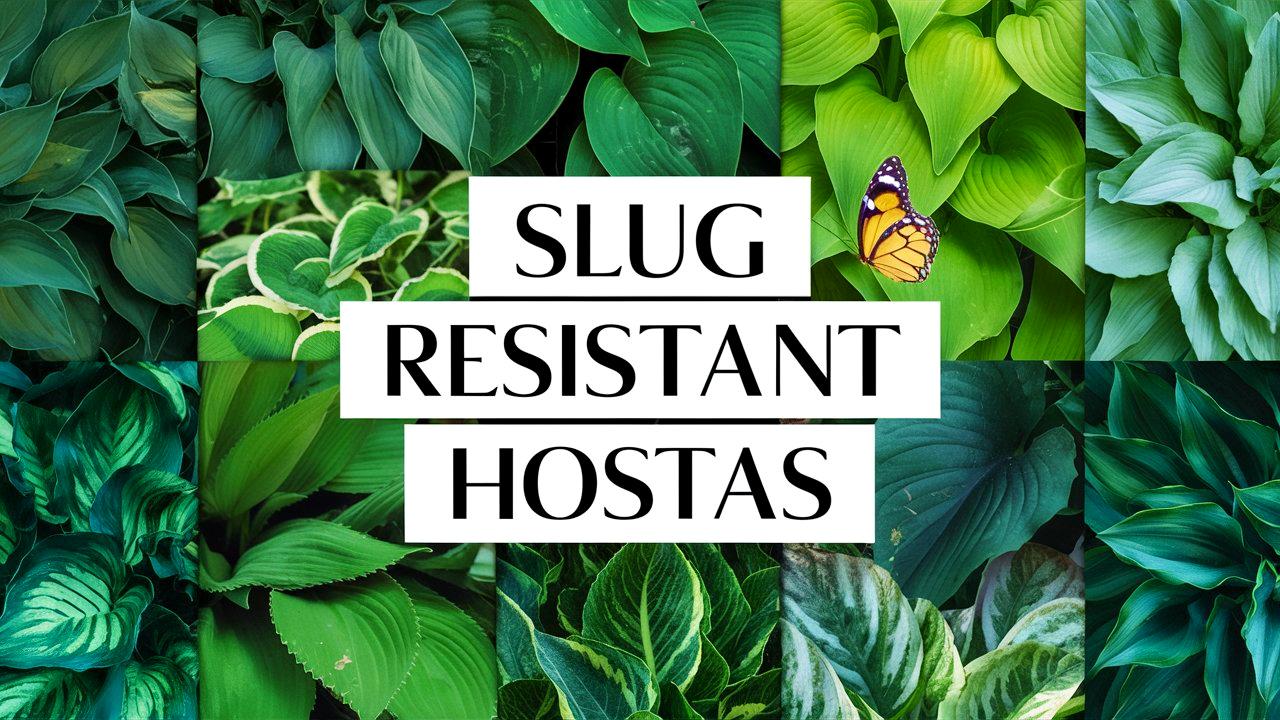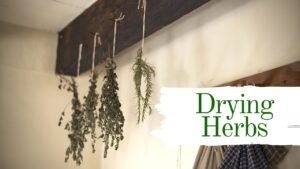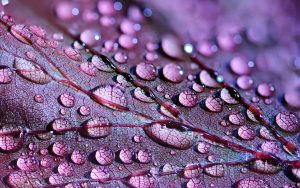In this guide, we’ll explore what makes a hosta slug resistant and delve into our top picks. Additionally, you’ll learn other smart methods to prevent slug infestations and protect your beloved plants.
What Makes a Hosta Slug Resistant?
Understanding the mechanisms behind slug resistance in hostas can help gardeners make informed choices for their landscapes. Several factors contribute to this resilience:
Leaf Structure: Some hostas possess thick, leathery leaves that are more difficult for slugs to penetrate. These robust leaves provide a formidable barrier that discourages slugs from feeding.
Texture: Varieties with a wavy or crinkled leaf texture can be less appealing to slugs. The uneven surfaces make it harder for these slimy creatures to move and latch on, creating a natural deterrent.
Chemical Composition: Certain hostas may produce natural compounds that are unappealing to slugs. While this area of research is still developing, it suggests that some varieties have the ability to repel pests through their innate chemistry.
Growth Habits: Slug-resistant hostas often grow more upright, limiting the amount of low-hanging foliage that slugs can easily access. This vertical growth pattern reduces their risk of damage and makes maintenance easier.
By selecting hostas that display these characteristics, gardeners can significantly reduce the likelihood of slug-related damage in their gardens.
Top Hosta Picks for Slug Resistance
When planning your slug-resistant garden, consider incorporating some of these hostas known for their ability to withstand slug attacks. Below, we discuss each recommended variety, noting their unique features and care requirements.
Halcyon
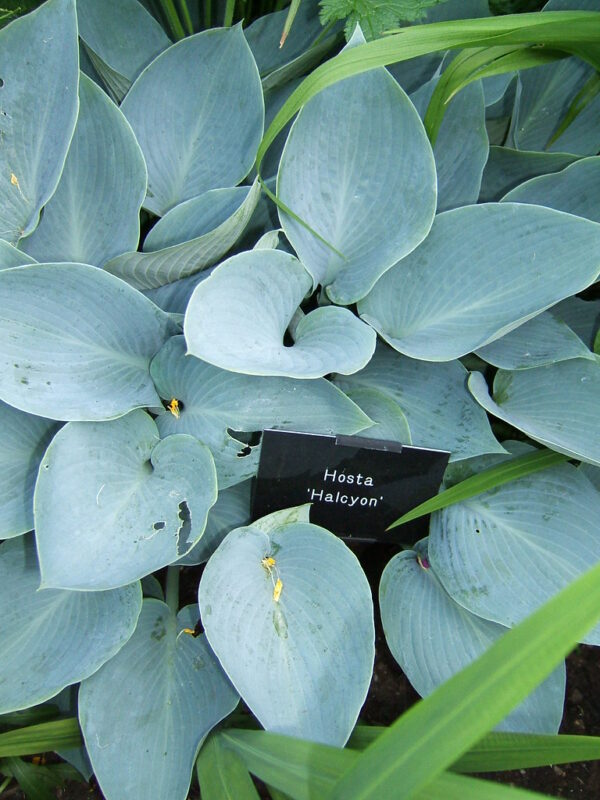
Halcyon is a striking choice with its blue-gray leaves that lend a cool tone to any garden. Its thick, waxy leaves are tough enough to deter slugs. This hosta grows to about 24 inches tall and spreads roughly 36 inches wide, making it a solid mid-sized plant. Additionally, its dense foliage provides attractive coverage, minimizing the visibility of bare patches from slug damage. “Halcyon” flourishes in partial to full shade and thrives in well-drained soil.
First Frost
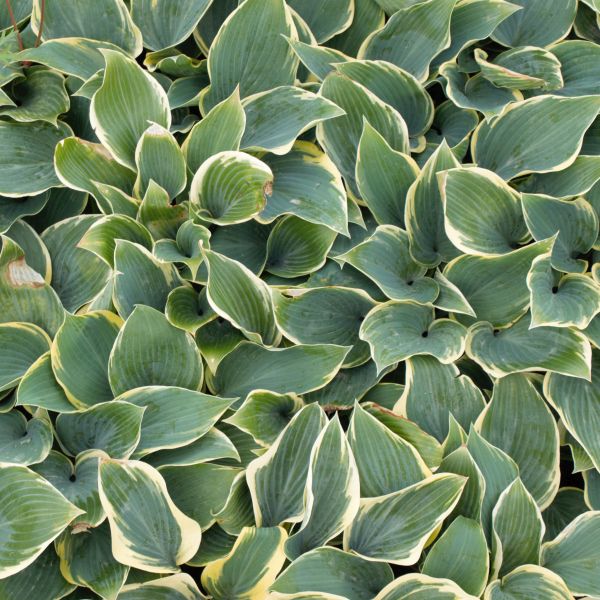
The First Frost hosta is a stunning variety known for its unique border of creamy yellow that transitions to white as the season progresses. This gradual shift creates a captivating aesthetic while simultaneously offering slug resistance through its thicker foliage and texture. Reaching a height of about 16 inches, it spreads to about 28 inches, making it ideal for borders or containers. This hosta thrives in partial shade and benefits from consistent moisture, ensuring its colors remain vibrant.
Sieboldiana Elegans
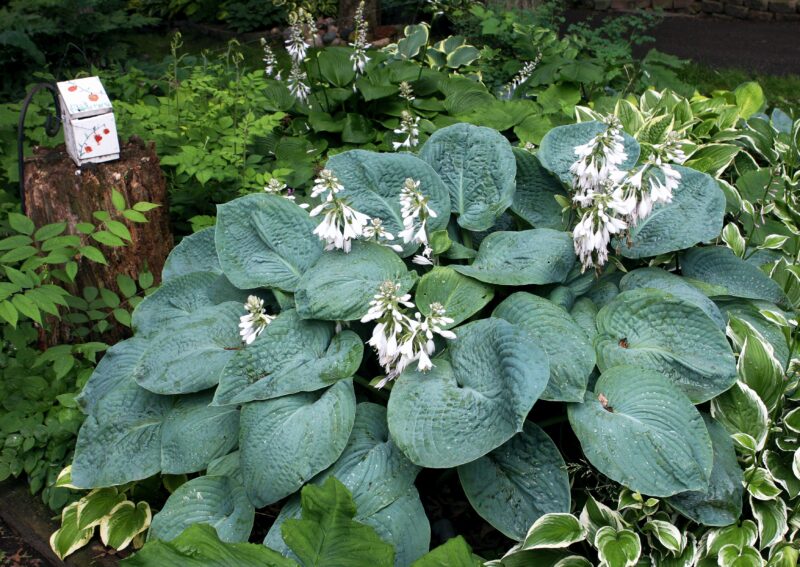
Sieboldiana Elegans, often referred to as Blue Emperor, is renowned for its impressive size and beautiful blue leaves that can reach over 30 inches tall and up to 60 inches wide. Its substantial size means it can withstand some damage, and slugs often struggle to penetrate its thick, heavy foliage. Additionally, it produces lovely lavender blooms in late summer, adding seasonal interest to your garden. This variety grows well in full to partial shade and prefers moist, fertile soil.
Sagae
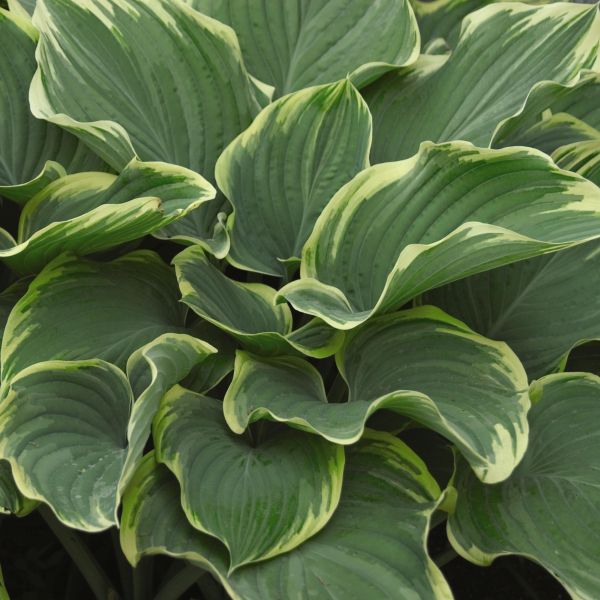
Sagae is another wonderful selection, cherished for its contrasting blue-green leaves edged with creamy yellow margins. This tall hosta reaches up to 30 inches in height and can spread 50 inches wide. Its leaf texture is notably thick, which helps in battling slug activity. Moreover, it’s resilient in various conditions, tolerating both sun and shade, though it prefers shade for optimal growth. In late summer, Sagae also showcases elegant, tall flower spikes, enhancing its ornamental value.
Rainforest Sunrise
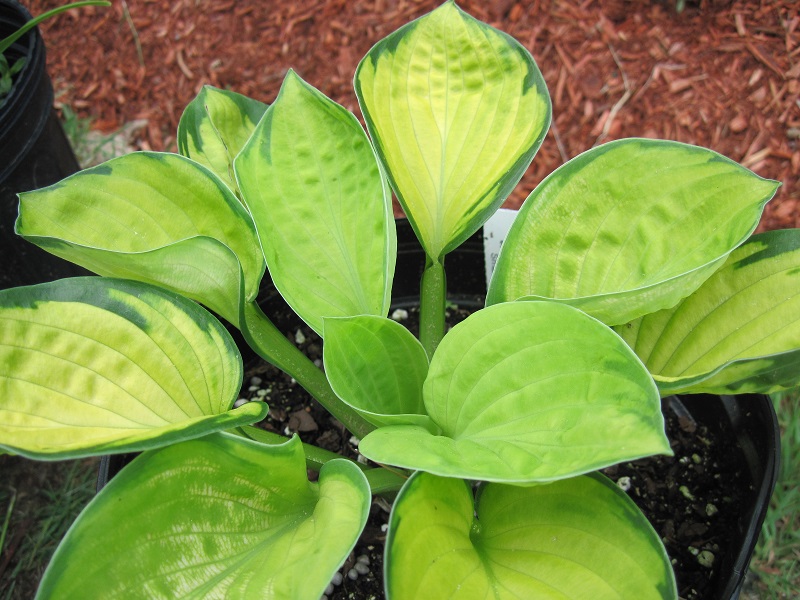
Rainforest Sunrise stands out with its vibrant, variegated leaves that change colors through the seasons, starting with hues of gold and green. While this hosta is beautiful, its thick leaves coupled with a slight ripple make it less desirable for slugs. Growing to approximately 20 inches in height, this specimen thrives in medium to low light and flourishes in a moisture-retentive, well-drained soil, ensuring it stays energized and less susceptible to slug invasion.
Liberty
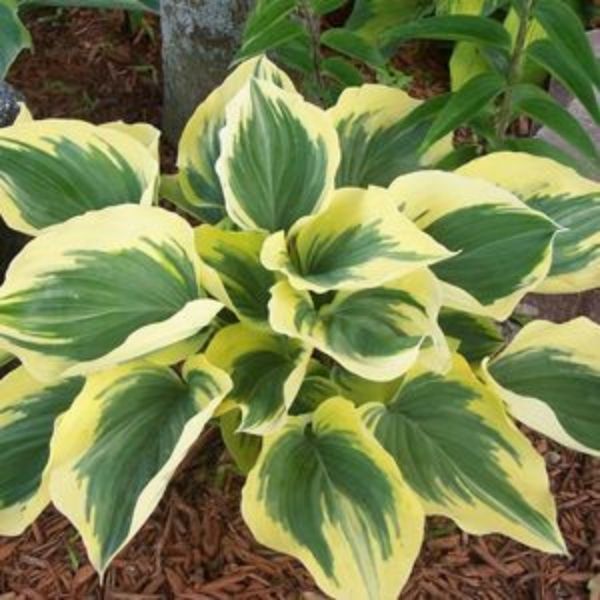
Liberty is an exciting hosta that brings bursts of color to shady areas, featuring bright gold centers with a contrasting dark green edge. Its attractive foliage and robust growth—reaching heights of 24 to 30 inches—make it a popular selection for many gardeners. This hosta’s thick leaves not only look stunning, but they also help ward off slugs, allowing them to flourish in enriched garden beds in total or partial shade.
Sum and Substance
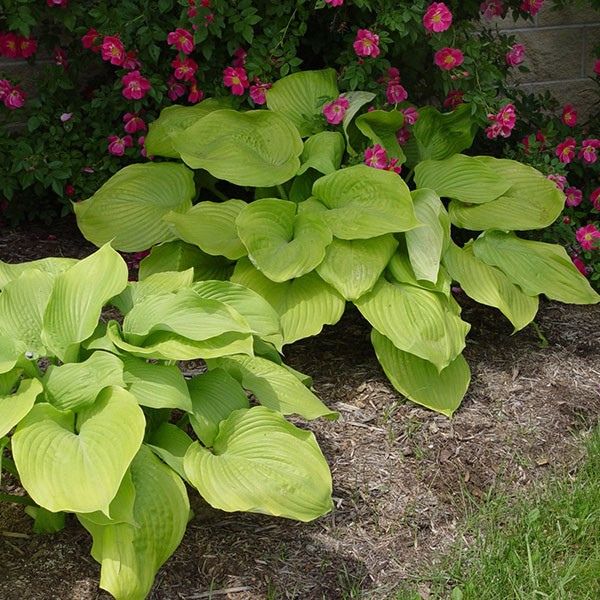
The name Sum and Substance accurately describes this hosta; its gigantic, heart-shaped leaves can bring bold statements to any landscape. Growing to about 30 inches tall and spreading over 60 inches, it is undeniably a feature piece in any shady garden. The thick, heavy structure of the leaves serves as a natural deterrent to slugs. Recognized for its blue-green foliage, it prefers dappled sunlight and moist soil, making it a fantastic choice for woodland gardens.
Blue Mouse Ears
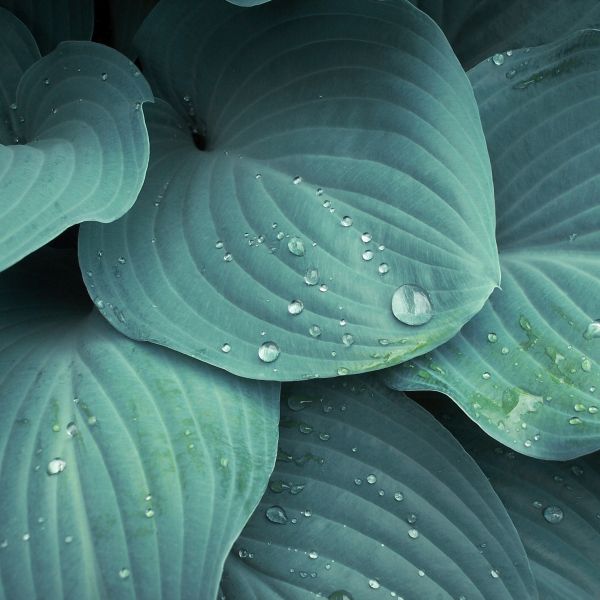
For a delightful and compact option, Blue Mouse Ears stands out with its adorable, round leaves that can reach up to 10 inches tall. Its densely packed foliage features a beautiful blue tone, making it an attractive ground cover. This miniature hosta is particularly responsive to slug deterrent methods because of its smaller profile, thriving in shady corners of gardens. Blue Mouse Ears prefer well-draining soil with organic matter for optimal growth.
Praying Hands
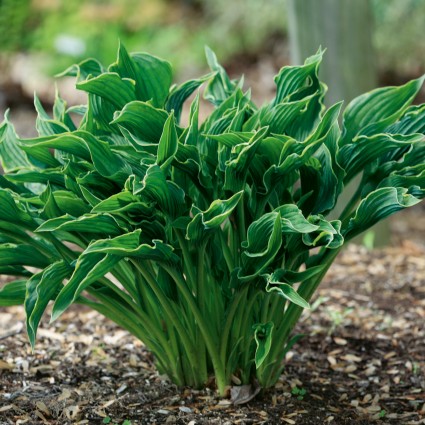
Praying Hands is an extraordinary hosta characterized by its narrow, upright leaves that appear to almost be folded or clasped together. The unique growth habit not only creates visual interest but also makes it a slug-resistant choice, as slugs typically prefer broader, flatter leaves. This hosta reaches a height of about 15 to 20 inches, making it an excellent choice for accenting paths or gardens. It flourishes in partial shade with rich, moisture-retentive soil to keep it healthy and vibrant.
Other Smart Slug Prevention Methods
While selecting slug-resistant hostas is an effective strategy to combat these pests, integrating other preventative methods can further protect your garden:
Environmental Management: Slugs thrive in damp conditions, so controlling moisture levels can hinder their activity. To minimize slug populations, water your plants in the early morning, allowing excess moisture to evaporate throughout the day.
Copper Barriers: Place copper tape around the base of your hostas to create a barrier. Slugs are repelled by copper, so a simple copper strip can deter them from climbing your plants.
Natural Predators: Encourage natural slug predators in your garden, such as toads, frogs, and birds. Creating habitats that attract these animals can help maintain a balanced ecosystem that keeps slug populations in check.
Manual Removal: Regularly inspect your garden and remove slugs by hand. Doing this early in the morning or late in the evening, when they are most active, can help reduce their numbers. Dispose of them away from your garden to prevent re-infestation.
Encouraging Ground Cover: Plant ground covers that slugs find less appealing or that compete for space with hostas. Varieties like creeping thyme or sedum can help protect your hostas from slug invasion by creating dense ground coverage.
Hosta Heaven – No Slugs Allowed
Creating a slug-free haven for your hostas involves not just finding the right varieties, but also incorporating overall garden design principles and proactive measures to minimize appeal to slugs.
First Frost (Hosta x ‘First Frost’) serves as an exemplary model of this idea. Beyond its slug-resistant characteristics, its adaptability and visually striking colors make it a standout option. Incorporating hostas such as “First Frost” alongside other slug-resistant varieties enhances the garden’s visual aesthetics while protecting themselves from pests.
Sum and Substance

Sum and Substance is not only an excellent slug-resistant choice but is also renowned for its immense size and spectacular presence. Planting this variety in combination with other slug-resistant hostas can create a robust shoreline effect that deters not only slugs but also enhances the overall visual appeal of your garden. The contrast between its large foliage and smaller companion plants can usher a unique garden dimension, resulting in a stunning display admired by passersby.
3 Ways to Protect Your Hosta From Slugs and Snails
In addition to selecting the right slug-resistant hostas, proactive protection measures can ensure the health of your plants. Let’s explore three effective techniques:
Mulching Wisely: Use coarse mulch materials such as wood chips or gravel around the base of your hostas. Slugs prefer smooth, moist surfaces, and rough textures can inhibit their ability to navigate the garden.
Organic Deterrents: Employ environmentally safe deterrents like diatomaceous earth, crushed eggshells, or coffee grounds around your hostas. These materials create boundaries that are uncomfortable for slugs to cross, protecting your plants from damage.
Plant Companion Strategies: Incorporate companion planting to create a more resilient garden ecosystem. Pairing hostas with plants that slugs dislike, such as marigolds or rosemary, can create natural barriers that improve your hostas’ chances of thriving.
In conclusion, while slugs are a common nuisance for hosta enthusiasts, the world of slug-resistant hostas provides a delightful array of options to ensure your garden remains both beautiful and protected. With careful selection of hosta varieties and integrated pest management approaches, you can cultivate a thriving garden that is, quite literally, slug-free


